NCERT Solutions for Class 9 English Main Course Book Unit 7 Sports and Games Chapter 1 Grandmaster Koneru Humpy Queen of 64 Squares are part of NCERT Solutions for Class 9 English. Here we have given NCERT Solutions for Class 9 English Main Course Book Unit 7 Sports and Games Chapter 1 Grandmaster Koneru Humpy Queen of 64 Squares.
| Board | CBSE |
| Textbook | NCERT |
| Class | Class 9 |
| Subject | English Main Course Book |
| Chapter | Unit 7 Chapter 1 |
| Chapter Name | Grandmaster Koneru Humpy Queen of 64 Squares |
| Category | NCERT Solutions |
CBSE Class 9 English Main Course Book Unit 7 Sports and Games Chapter 1 Grandmaster Koneru Humpy Queen of 64 Squares
Question 1.
Avik, a correspondent for his school magazine, interviews Grandmaster Koneru Humpy. Let us read :
INTERVIEW WITH KONERU HUMPY :
Avik : Good morning, Ma’am! Congratulations on your achievements in the World G r a n d P r i x W o m e n ‘ s C h e s s Championship in Istanbul recently!
Koneru Humpy : Thank you! This is my biggest win in the women’s circuit. This is very significant, considering that it has come in an event which had three former world champions.
Avik : Indeed! Please tell us something about yourself, Ma’am!
Koneru Humpy : I was born in Gudivada, near Vijaywada, in Andhra Pradesh on March 31, 1987.I was originally named ‘Hampi’ (which means champion) by my father Mr Koneru Ashok, who later changed the spelling to Humpy, to give the name a Russian flavour. I write my family name, Koneru, before my given name, as is the convention with the Telugu speaking people. I started playing chess when I was 5 years old.
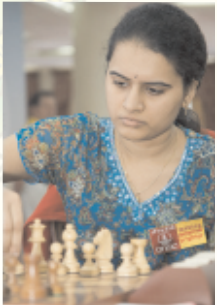
Avik : Who made you familiar to the game?
Koneru Humpy : My father acquainted me with the game. He is also my first coach. I first showed interest at the age of 6 years, when I watched him play a game and suggested a move. Indeed it was the move that actually got me into the game.
Avik : Your father left his teaching profession to make you a champion!
Koneru Humpy : Yes, when I took the 4th place in the Indian Under 8 Championship in 1995, he decided to leave his career and dedicate his time to me.
Avik : And you had won four World Championships at a very early stage.
Koneru Humpy : Yes, the World Girl Under 10, the World Girls Under 12, the World Girls Under 14 and World Girls Junior Championships. I acquired my IM title in 1999 and in May 2002, I achieved my 3rd GM Norms in Elekes Memorial Grandmaster Tournament in Budapest.
Avik : You held the record from 2002 to 2008 for the youngest woman ever to become a grandmaster!
Koneru Humpy : Yes, I achieved it at the age of 15 years, 1 month, 27 days, beating Judit Polgar’s previous record by 3months; which was later lost in the Women’s World Chess Championship in 2008 to Hou Yifan. I won the World Junior Girls Chess Championship in 2001 and won the edition or North Urals Cup, the Women’s Super Tournament held in Krasnoturinsk. In 2006 I participated in the Women’s World Chess Championship, but my campaign had to end early in the second round. I played in the first board of Monte Carlo Chess Club and won the last two editions of the European Club Cup.
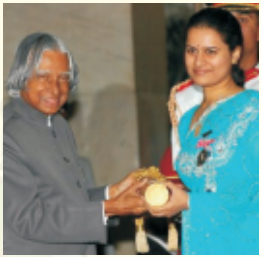
Avik : You have got some awards also!
Koneru Humpy : Yes, Arjuna Award in 2003, Padmashri Award in 2007 and Raja-Lakshmi Award in 2008.
Avik : In India, many young chess players are ready to take a break in education and are fully focussed on chess preparations. What are your views?
Koneru Humpy : I don’t think that taking up chess as a career and completely neglecting studies will be necessary at an earlier stage. After getting to a certain level in the game, they themselves should decide their preferences i.e. whether to play seriously or not.
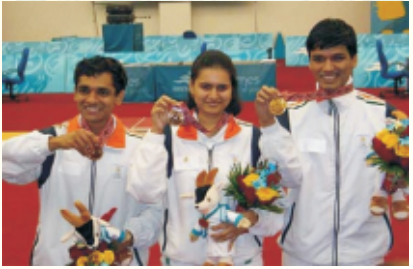
Avik : What advice would you offer to parents of enthusiastic and talented chess children?
Koneru Humpy : Parents should not compel children to play chess. If children are genuinely interested in the game, they should encourage them. But they shouldn’t hurry to get results.
Avik : How often do you exercise? Do you think daily physical exercise can help a chess player to cope with the pressure and increase the brain’s ability to concentrate?
Koneru Humpy : I spend around one hour per day on physical exercise. Exercise is a must for every chess player. As the proverb says, ‘a sound mind in a sound body’. Exercise shows a lot of impact on the brain.
Avik : Thank you for talking to me and giving valuable advice.
Koneru Humpy : Thank you.
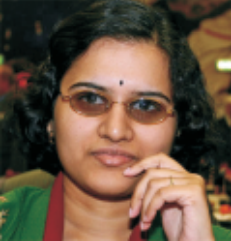
Answer :
No Question Asked.
Question 2.
Now complete the Bio-data on koneru humpy.


Answer :

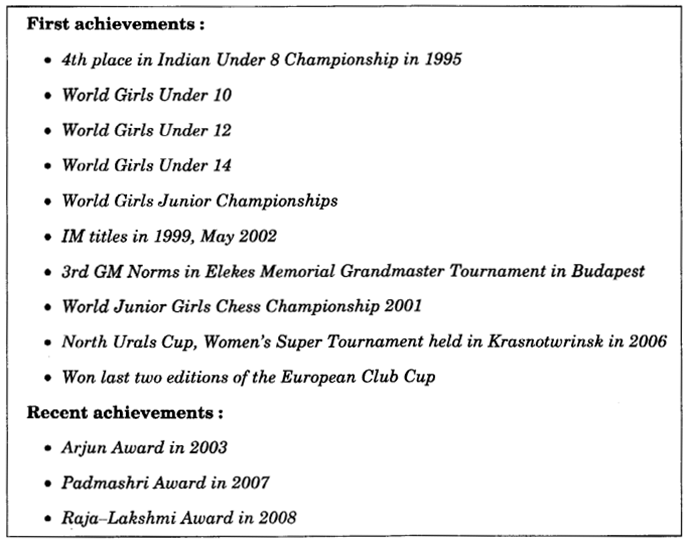
Question 3.
Grandmaster Koneru Humpy is visiting your school and you, as the Sports Captain, have to introduce her in the school assembly. With the help of Question 2, write out the Bio-sketch.
Answer :
Distinguished Guest, worthy Principal, staff and students :
I am very glad to introduce you to the distinguished guest Grandmaster Koneru Humpy. We are glad that she has spared some moments of her busy schedule to address you. I welcome her on your behalf.
Grandmaster Koneru Humpy was born on March 31, 1987 at Gudivada near Vijayawada in Andhra Pradesh. She was inspired and trained by her father Mr Koneru Ashok. Very quickly she got 4th place in Indian Under 8 Championship in 1995. She soon won four world Championships at a very early stage. Besides that she acquired her IM title in 1999 and in May 2002. She achieved her 3rd GM Norms in Elekes Memorial Grandmaster Tournament in Budapest. She held the record from 2002 to 2008 for the youngest woman ever to become a Grandmaster.
She has profusely been honoured for bringing India on the world Chess map. She rightly got Arjuna Award in 2003, Padmashri Award in 2007 and Raja-Lakshmi Award in 2008. I welcome her again on your behalf. I hope you shall be inspired by this distinguished Grandmaster.
Question 4.
Know all about Chess, Read and enjoy : You now know a little about Koneru Humpychess player but do you know how to play chess? Let’s know more about it: Have you ever played chess? Did you know that chess is the oldest skill game in the world? But chess is more than just a game of skill.
It can tell you much about the way people lived in medieval times. If you look at the way a chess board is set up, then study the pieces and how they are used, you will realise that chess is a history of medieval times in miniature. The six different chess pieces on the board represent a cross section of medieval life with its many ceremonies, grandeur, and wars.
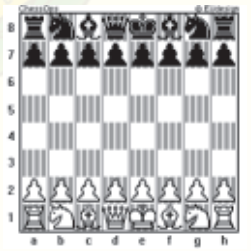
Chess was played many centuries ago in China, India, and Persia. No one really knows for sure in which country it originated. Then, in the eighth century, armies of Arabs known as Moors invaded Persia. The Moors learned chess from the Persians. When the Moors later invaded Spain, the soldiers brought the game of chess with them. Soon the Spanish were playing chess, too. From Spain, chess quickly spread throughout all of Europe.
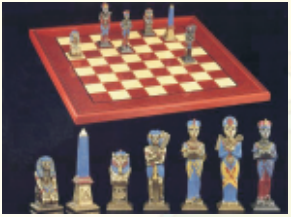
Europeans gave chess pieces the names we know today; they probably had trouble pronouncing and spelling the Persian names, so they modernized them to reflect the way they lived. Today, the names certainly aren’t modern but a thousand years ago they represented the very way in which both ordinary people and persons of rank lived their lives
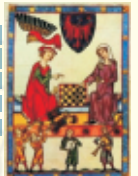
The pawns on the chess board represent serfs, or labourers. There are more of them than any other piece on the board, and often they are sacrificed to save the more valuable pieces. In medieval times, serfs were considered no more than the property of landowners, or chattels. Life was brutally hard for serfs during this era of history. They worked hard and died young. They were often left unprotected while wars raged around them. They could be traded, used as a diversion, or even sacrificed to allow the landowners to escape harm.
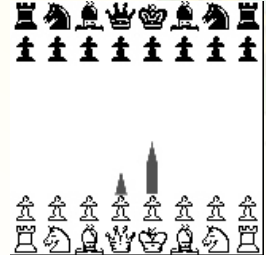
The castle piece on a chess board is the home, or the refuge, just as it was a home in medieval times. In Chess, each side has two castles, or rooks, as they are sometimes called.
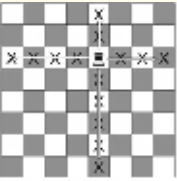
The knight on a chess board represents the professional soldier of medieval times whose job it was to protect persons of rank, and there are two of them per side in a game of chess. Knights in a game of chess are more important than pawns, but less important than bishops, kings, or queens. Their purpose in the game of chess is to protect the more important pieces, and they can be sacrificed to save those pieces just as pawns can.
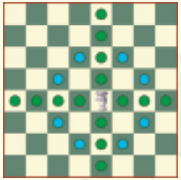
There is a bishop in the game of chess, who represents the church. The Church was a rich and mighty force in medieval times, and religion played a large part in every person’s life. It is no wonder that a figure that represented the concept of religion found its way into the game. A bishop was the name for a priest in the Catholic church who had risen through the ranks to a more powerful position. In the game of chess, there are two bishops for each side.
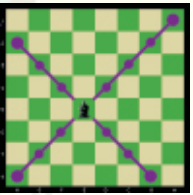
The queen is the only piece on the board during a chess game that represents a woman, and she is the most powerful piece
of the game. There is only one queen for each side. Many people do not realize that queens in medieval times often held a powerful, yet precarious position. The king was often guided by her advice, and in many cases the queen played games of intrigue at court. But kings could set wives aside or even imprison them in nunneries with the approval of the church.
Many women schemed merely to hold their place at court. The machinations of queens working either for or against their kings are well noted in history throughout medieval times, and often the queen held more power than the king did.
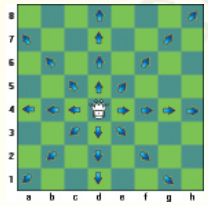
The king is the tallest piece on the board, and is as well defended on the chessboard as in medieval life. In medieval times, the surrender of the king would mean the loss of the kingdom to invading armies and that could mean change for the worse. It was to everyone’s advantage, from the lowest serf to the highest-ranking official, to keep the king safe from harm. The king is the
most important, but not the most powerful piece in chess. If you do not protect your king, you lose the game.
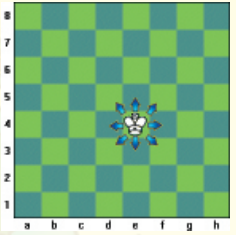
The next time you set up your chessboard and get ready to play a friendly game or two, think of chess as a history lesson. The pieces on the board represent a way of life that is no more, and the real life dramas that occurred in medieval times are now only a game.
Answer :
No Question Asked.
Question 5.
On the basis of your reading of the extract on Chess, complete the following table with your partner.
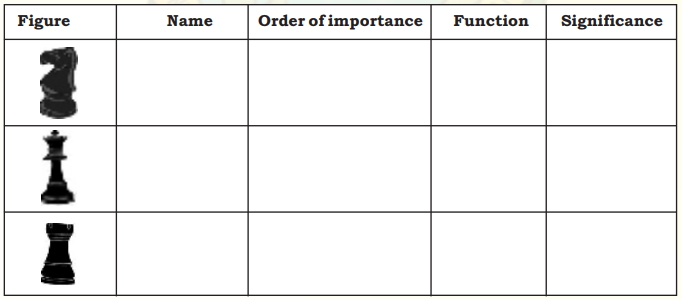
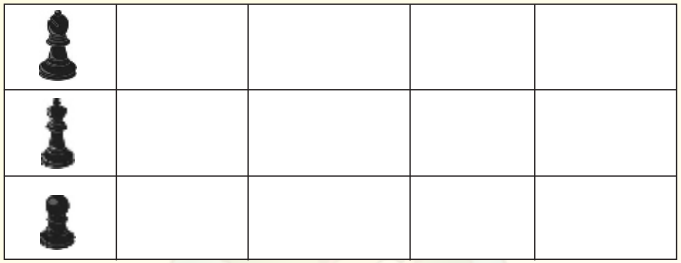
Answer :
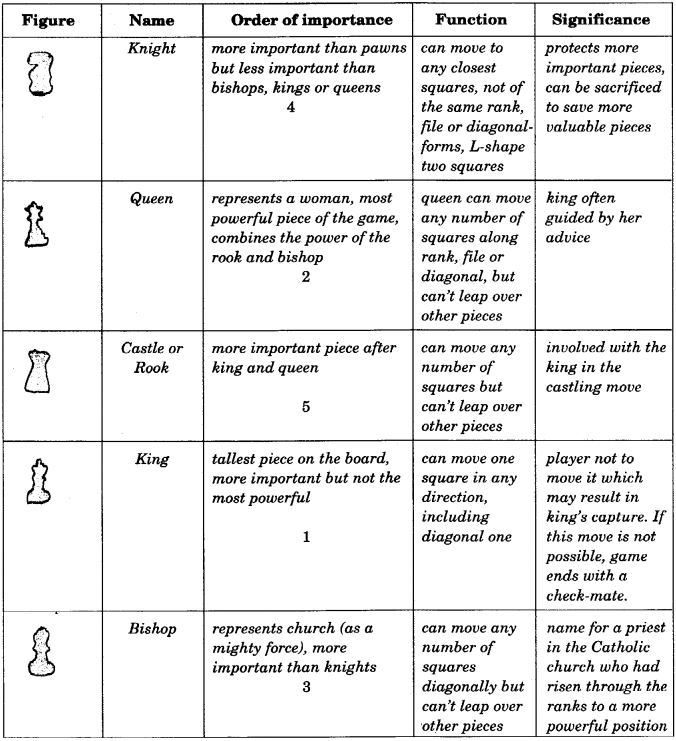

Question 6.
Below is some information about Jesse Owens, one of the most famous athletes of all times. His friend is planning to write his biography. Using information from the table, complete the biography. (The first gap has been completed for you, as an example.)

James Cleveland Owens (J.C. Owens) became famous as Jesse Owens
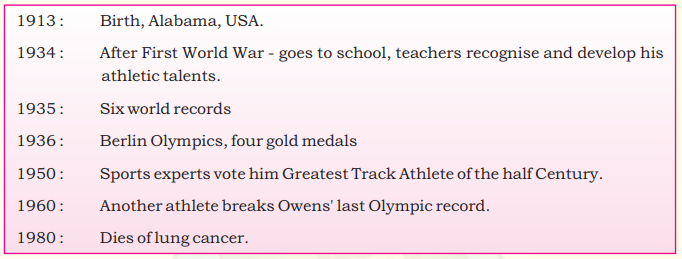
Jesse Owens was born in Alabama USA, in 1913. He was the youngest of ten children, and the family lived in a cramped shanty house. After the First World War, the family moved to Cleveland, where his school (1) __________________ his talents. He quickly became a local hero. Soon afterwards he gained a place not only at the Ohio State University, but also in the US Olympics team. On 25th May 1935, Jesse Owens performed athletics’ greatest feat when he (2) _______ at the Ohio state University Athletics Championships. A year later, at the Berlin Olympics, his greatness was confirmed; he (3) ______________________ for 100m, 200m, long jump and sprint relay. Because of his achievements in track and field events,1950 he (4) ________________.His last Olympic record (5) ____________________ only in 1960. This great athlete (6) _______ 1980.
Class discussion :
Is a biography written in a particular order of events? Which is the most common tense?
Answer :
- recognised and developed
- set six world records
- won four gold medals
- was voted the Greatest Track Athlete
- was broken
- died of lung cancer in
(i) Usually a biography is written in a particular order of events.
(ii) It is the simple past tense.
Question 7.
20 years from now, one of your class-mates becomes a famous sport-star. You have been asked to write his / her biography. Collect the necessary biographical details. Use your imagination to create his / her achievements in the sport concerned, and write the biography. Remember to write it in chronological order of events, and use the simple past tense as far as possible
Answer :
For self-attempt. Students can write on their own the biography in a chronological order. A sample answer is given below for their guidance.
Nitin Kumar, a talented sportsman
Who does not know the legendary Nitin Kumar ? He was born in a hut of poor parents in West Bengal on September 1,1978. He was the third son of eight children. His father was a worker in a Mill. Nitin was a gifted child. But he had a great liking for cricket. Playing it in the evening he had acquired some skill. The great cricketer Wankhede saw him playing the game one day. He, at once, saw that there was a player who could bring glory to the country in cricket. Impressed by Nitin’s playing, he met the President of the Board of Cricket Control. Nitin was admitted to a sports school at Kolkata. Kulanand, the coach, saw in him great qualities and a potential to shine in sports. He trained him with all the attention ; keeping in mind the international standards of the game.
Soon, the rigorous training of Kulanand bore rich fruits. Nitin was included in Indian Cricket Team visiting England in 1997. He took the maximum wickets in Test Matches there. He scored a century each in three one-dayers. In all, he took 16 wickets and was declared the Man of the Match.
In 2000, Nitin was made the Vice Captain of the Team. When captain Shamsher Singh could not participate in the World Cup, Nitin was entrusted with this responsibility. By dint of sheer hard work and dedication, Nitin and his team won the World Cup. His record of maximum wickets and runs is yet to be broken.
We hope the NCERT Solutions for Class 9 English Main Course Book Unit 7 Sports and Games Chapter 1 Grandmaster Koneru Humpy Queen of 64 Squares help you. If you have any query regarding NCERT Solutions for Class 9 English Main Course Book Unit 7 Sports and Games Chapter 1 Grandmaster Koneru Humpy Queen of 64 Squares, drop a comment below and we will get back to you at the earliest.